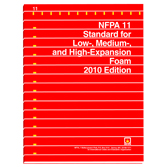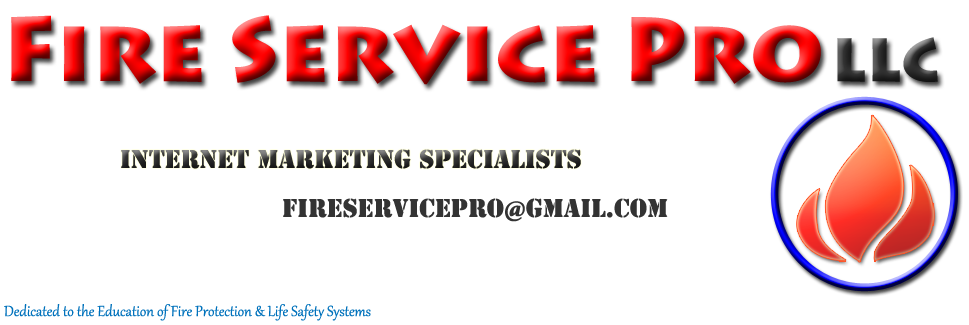Foam Fire Extinguishers
Fire Extinguishers Athens, Georgia
![Foam Fire Extinguishers in Athens, Georgia]() Foam fire extinguishers are designed to remove the oxygen/air/vapor from the fuel source with a high expansion film forming foam blanket aiding in suppressing, containing or extinguishing Class A & B Fires. This burn back resistant blanket or membrane becomes a physical barrier from the fuel source and air/vapor/oxygen and has cooling properties. [above: AFFF Foam Fire Extinguishers] Foam fire extinguishers are designed to remove the oxygen/air/vapor from the fuel source with a high expansion film forming foam blanket aiding in suppressing, containing or extinguishing Class A & B Fires. This burn back resistant blanket or membrane becomes a physical barrier from the fuel source and air/vapor/oxygen and has cooling properties. [above: AFFF Foam Fire Extinguishers]
![Foam Type Wheeled Unit Fire Extinguisher in Athens, Georgia]() Foam fire extinguishers are used to supplement fire protection systems in Paint stores, hardware stores, filling stations, printers, wood finishers, pipelines, maintenance departments, paint departments, industrial facilities, refineries, oil refineries, gas refineries, petroleum development facilities, paint, auto body, welding, large warehouses, laboratories, water districts, power plants, heliports, chemical plants, refineries, offshore platforms, mining facilities, pumping stations, airport & aircraft hangars, military bases, marine or naval ships anywhere flammable liquids sold or stored represents a need for foam extinguishers or where highly flammable liquids or specific fire hazards may be present and the need to extinguish, suppress or contain the rapid spread of fire is imminent in Athens, Georgia. [left: Wheeled Unit Stored Pressure High Performance Foam Fire Extinguishers] Foam fire extinguishers are used to supplement fire protection systems in Paint stores, hardware stores, filling stations, printers, wood finishers, pipelines, maintenance departments, paint departments, industrial facilities, refineries, oil refineries, gas refineries, petroleum development facilities, paint, auto body, welding, large warehouses, laboratories, water districts, power plants, heliports, chemical plants, refineries, offshore platforms, mining facilities, pumping stations, airport & aircraft hangars, military bases, marine or naval ships anywhere flammable liquids sold or stored represents a need for foam extinguishers or where highly flammable liquids or specific fire hazards may be present and the need to extinguish, suppress or contain the rapid spread of fire is imminent in Athens, Georgia. [left: Wheeled Unit Stored Pressure High Performance Foam Fire Extinguishers]
Foam Fire Extinguisher Service
Fire Extinguishers Athens, Georgia
![Foam Fire Extinguisher Service in Athens, Georgia]() Foam and water fire extinguishers should be serviced according to manufacturer specifications, Federal, OSHA, State, NFPA 10 Standard for Portable Fire Extinguishers or municipal fire code in Athens, Georgia. Foam and water fire extinguishers should be serviced according to manufacturer specifications, Federal, OSHA, State, NFPA 10 Standard for Portable Fire Extinguishers or municipal fire code in Athens, Georgia.
[Foam and Water Fire Extinguisher Stored Pressure (Right) ]
By shopping licensed, authorized, qualified and factory trained fire extinguisher companies in Athens, Georgia you may obtain estimates that will detail the costs to install, service, repair, test, inspect, maintain, annual tags & certifications, (6) six year inspections, refill, recharge or replacement of foam and water portable, wheeled or fixed unit fire extinguishers.
NRL - The US Naval Research Laboratory
  Beginning in the early 1960s, NRL conducted research on fire suppression that eventually led to one of the most far-reaching benefits to worldwide aviation safety -- the development of aqueous film-forming foam (AFFF). AFFF rapidly extinguishes hydrocarbon fuel fires. It has the additional property of forming an aqueous film on the fuel surface that prevents evaporation and hence, reignition of the fuel once it has been extinguished by the foam. The film also has a unique, self-healing capability whereby scars in the film layer caused by falling debris or firefighting activities are rapidly resealed. This firefighting foam is now used on all U.S. Navy aircraft carriers and by major airports, refineries, and other areas where potentially catastrophic fuel fires can occur. In 1979, this NRL-developed fire suppressant was in use at more than 90 airports in the U.S. alone as well as in many civilian fire departments. - Visit NRL: https://www.nrl.navy.mil/accomplishments/materials/aqueous-film-foam/ Beginning in the early 1960s, NRL conducted research on fire suppression that eventually led to one of the most far-reaching benefits to worldwide aviation safety -- the development of aqueous film-forming foam (AFFF). AFFF rapidly extinguishes hydrocarbon fuel fires. It has the additional property of forming an aqueous film on the fuel surface that prevents evaporation and hence, reignition of the fuel once it has been extinguished by the foam. The film also has a unique, self-healing capability whereby scars in the film layer caused by falling debris or firefighting activities are rapidly resealed. This firefighting foam is now used on all U.S. Navy aircraft carriers and by major airports, refineries, and other areas where potentially catastrophic fuel fires can occur. In 1979, this NRL-developed fire suppressant was in use at more than 90 airports in the U.S. alone as well as in many civilian fire departments. - Visit NRL: https://www.nrl.navy.mil/accomplishments/materials/aqueous-film-foam/
|
|
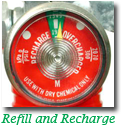
Fire extinguishers will generally have a pressure gauge to notify you when it requires a refill and recharge of the extinguishers contents so that it may be ready and operational for use to extinguish fires in Athens, Georgia. |
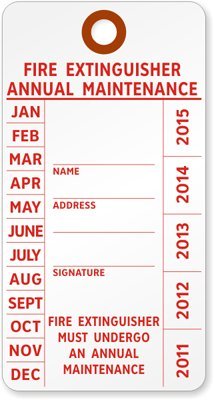
Annual inspections and certification tags should be completed by factory authorized, manufacturer certified fire extinguisher companies actively licensed in Athens, Georgia. |
Fire Extinguishers will require service, maintenance and repair to remain fully operational at all times.
- Recharging
- Hydrostatic Tests
- Refilling
- Annual Inspections
The services performed on installed fire extinguishers in Athens, Georgia should be performed by actively licensed, manufacturer certified and/or NAFED certified fire extinguisher companies in Athens, Georgia.
The additional certifications aid in determining levels of knowledge, experience and professional courtesy when deciding which fire extinguisher company you'll choose to work with. |
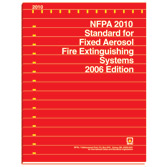
Standard for Portable Fire Extinguishers
NFPA 10
1.1* Scope. The provisions of this standard apply to the selection, installation, inspection, maintenance, and testing of portable extinguishing equipment. A.1.1 Many fires are small at origin and can be extinguished by the use of portable fire extinguishers. Notification of the fire department as soon as a fire is discovered is strongly recommended. This alarm should not be delayed by awaiting results of the application of portable fire extinguishers. Fire extinguishers can represent an important segment of any overall fire protection program. However, their successful functioning depends upon the following conditions having been met: (1) The fire extinguisher is located in accordance with the requirements of Chapter 6 and is in working order. (2) The fire extinguisher is of the correct type for a fire that can occur. (3) The fire is discovered while still small enough for the fire extinguisher to be effective. (4) The fire is discovered by a person ready, willing, and able to use the fire extinguisher. Fixed systems are covered by the following NFPA standards: (1) NFPA 11, Standard for Low-, Medium-, and High-Expansion Foam (2) NFPA 12, Standard on Carbon Dioxide Extinguishing Systems (3) NFPA 12A, Standard on Halon 1301 Fire Extinguishing Systems (4) NFPA 13, Standard for the Installation of Sprinkler Systems (5) NFPA 14, Standard for the Installation of Standpipe and Hose Systems (6) NFPA 15, Standard for Water Spray Fixed Systems for Fire Protection (7) NFPA 16, Standard for the Installation of Foam-Water Sprinkler and Foam-Water Spray Systems (8) NFPA 17, Standard for Dry Chemical Extinguishing Systems (9) NFPA 17A, Standard for Wet Chemical Extinguishing Systems (10) NFPA 96, Standard for Ventilation Control and Fire Protection of Commercial Cooking Operations (11) NFPA 750, Standard on Water Mist Fire Protection Systems (12) NFPA 2001, Standard on Clean Agent Fire Extinguishing Systems 1.1.1 Portable fire extinguishers are intended as a first line of defense to cope with fires of limited size. 1.1.2 The selection and installation of extinguishers is independent of whether the building is equipped with automatic sprinklers, standpipe and hose, or other fixed protection equipment. (See 5.5.5, 6.1.1.1, 6.2.1.1, and 6.2.1.5.) 1.1.3 The requirements given herein are minimum. 1.1.4 The requirements do not apply to permanently installed systems for fire extinguishment, even where portions of such systems are portable (such as hose and nozzles attached to a fixed supply of extinguishing agent). |
Portable, wheeled or fixed unit fire extinguishers are an invaluable tool that every occupied building should install and properly service aiding in the containment, suppression or extinguishing of small fires in Athens, Georgia.





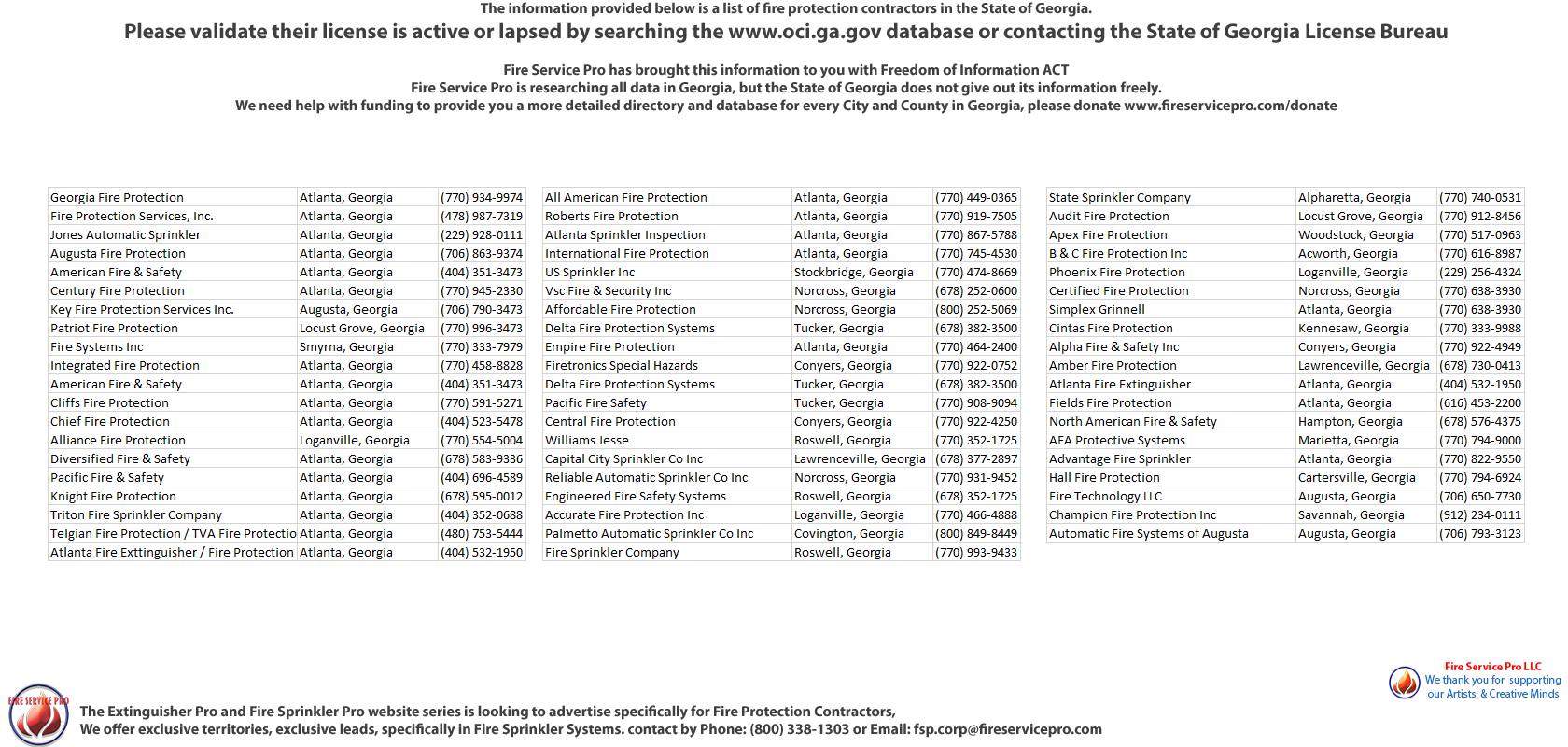
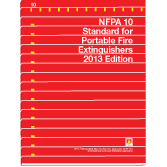

 Beginning in the early 1960s, NRL conducted research on fire suppression that eventually led to one of the most far-reaching benefits to worldwide aviation safety -- the development of aqueous film-forming foam (AFFF). AFFF rapidly extinguishes hydrocarbon fuel fires. It has the additional property of forming an aqueous film on the fuel surface that prevents evaporation and hence, reignition of the fuel once it has been extinguished by the foam. The film also has a unique, self-healing capability whereby scars in the film layer caused by falling debris or firefighting activities are rapidly resealed. This firefighting foam is now used on all U.S. Navy aircraft carriers and by major airports, refineries, and other areas where potentially catastrophic fuel fires can occur. In 1979, this NRL-developed fire suppressant was in use at more than 90 airports in the U.S. alone as well as in many civilian fire departments. - Visit NRL: https://www.nrl.navy.mil/accomplishments/materials/aqueous-film-foam/
Beginning in the early 1960s, NRL conducted research on fire suppression that eventually led to one of the most far-reaching benefits to worldwide aviation safety -- the development of aqueous film-forming foam (AFFF). AFFF rapidly extinguishes hydrocarbon fuel fires. It has the additional property of forming an aqueous film on the fuel surface that prevents evaporation and hence, reignition of the fuel once it has been extinguished by the foam. The film also has a unique, self-healing capability whereby scars in the film layer caused by falling debris or firefighting activities are rapidly resealed. This firefighting foam is now used on all U.S. Navy aircraft carriers and by major airports, refineries, and other areas where potentially catastrophic fuel fires can occur. In 1979, this NRL-developed fire suppressant was in use at more than 90 airports in the U.S. alone as well as in many civilian fire departments. - Visit NRL: https://www.nrl.navy.mil/accomplishments/materials/aqueous-film-foam/